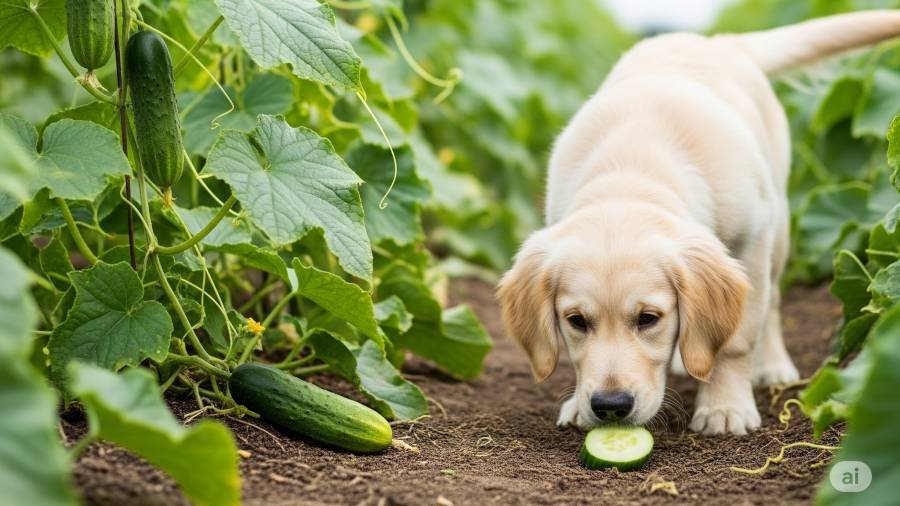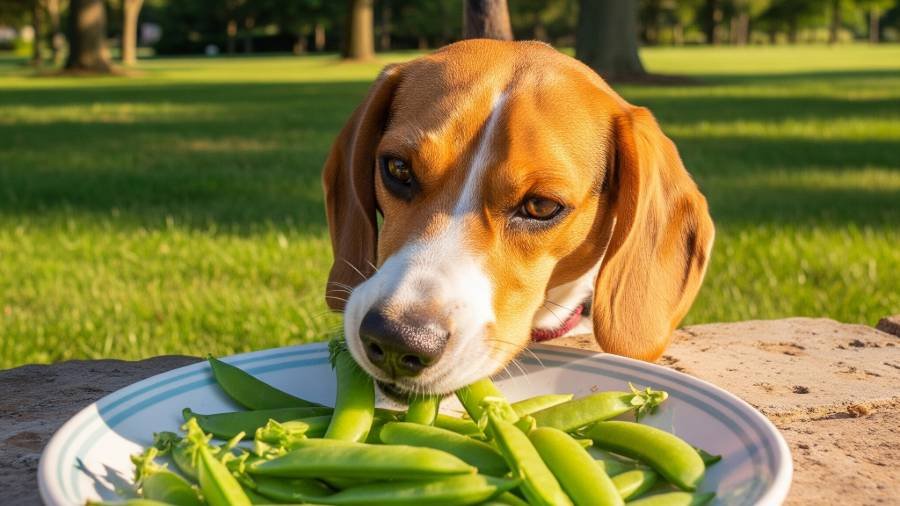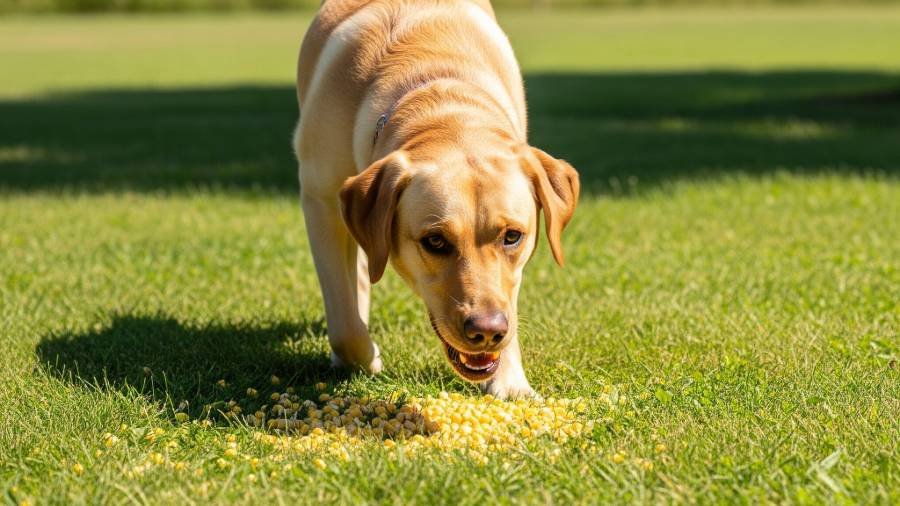Yes, dogs can eat bell peppers in moderation as a safe and nutritious addition to their diet, provided they are prepared properly and offered in small amounts.
This article provides a unique, detailed guide on feeding bell peppers to your dog, exploring their benefits, potential risks, and safe practices.

Potential Benefits of Bell Peppers for Dogs
When dogs eat bell peppers in controlled portions, they offer several advantages that enrich a dog’s diet:
- Rich in Vitamins and Minerals: Bell peppers, especially red bell peppers, are high in vitamin C and A, supporting the immune system and promoting healthy vision with beta carotene.
- Low-Calorie Treat: With minimal calories, they serve as a guilt-free snack, ideal for large dogs or small dogs needing weight management.
- Antioxidant Properties: The antioxidants in bell peppers help reduce inflammation and protect cells, offering health benefits that contribute to long-term wellness.
- Fiber Content: A small amount of fiber aids digestion, helping to maintain a healthy digestive system and prevent constipation.
- Hydration Support: The high water content in bell peppers provides a hydrating boost, particularly beneficial for active dogs on warm days.
These benefits of bell peppers for dogs make them a valuable option when you prepare bell peppers for dogs as an occasional treat. For more on safe human foods, explore what fruits can dogs eat.
Risks and Dangers of Bell Peppers for Dogs
While bell peppers are safe for dogs to eat, certain risks arise if not handled or fed correctly:
- Choking Hazard: Large pieces or whole peppers can pose a risk, especially for a small dog, if not cut into small pieces before feeding.
- Spicy Peppers: Varieties like chili peppers or hot peppers are toxic to dogs, causing gastrointestinal distress or more severe reactions, unlike mild bell peppers.
- Digestive Upset: Overfeeding, particularly in large quantities, may lead to diarrhea or stomach discomfort due to the vegetable’s fiber content.
- Allergic Reactions: Though rare, some dogs may experience itching or digestive issues as an allergic response to the outer skin or seeds.
- Pesticide Exposure: Non-organic bell peppers may contain residues, requiring thorough washing to avoid potential health issues.
- Seed and Stem Toxicity: The seeds and stems, if not removed, can cause mild irritation or choking, though they are less toxic than in some other vegetables.
How to Safely Feed Bell Peppers to Dogs
To ensure bell peppers are a safe treat, follow these guidelines when you feed your dog peppers to your dog:
- Wash Thoroughly: Rinse bell peppers under water to remove dirt, pesticides, or chemical residues, even if organic, to protect your dog’s health.
- Removing the Seeds and Stems: Cut away the seeds and stems to eliminate any potential irritation or choking hazard, focusing on the fleshy part.
- Cut into Small Pieces: Chop bell peppers into bite-size portions, especially for a small dog or puppy, to ensure easy chewing and safe swallowing.
- Cook or Serve Raw: Offer raw for crunch or lightly steam to soften, avoiding seasonings like salt or oil that can harm dogs.
- Feed in Small Amounts: Provide a small portion (e.g., 1-2 tablespoons for small dogs, up to ¼ cup for large dogs) once or twice a week, keeping treats under 10% of a dog’s daily intake.
- Avoid Spicy Varieties: Stick to bell peppers and avoid spicy peppers like jalapeños or chili peppers, which are unsafe for dogs.
- Monitor Reactions: Introduce bell peppers gradually and watch for digestive upset or allergies over 24-48 hours. Consult a vet if issues arise.
- Consult a Vet: Seek veterinary advice before adding bell peppers, especially for dogs with digestive sensitivities or a history of food allergies.
Signs of Bell Pepper-Related Issues
If a dog eats bell peppers improperly or reacts poorly, look for these warning signs:
- Vomiting, diarrhea, or reduced appetite (possible gastrointestinal distress from overeating)
- Difficulty breathing or choking (from large pieces or seeds)
- Excessive scratching or swelling (rare allergic reactions)
- Lethargy or unusual behavior (nutritional imbalance or sensitivity)
- Abdominal pain or bloating (digestive overload)
If these signs appear, stop feeding bell peppers and contact a veterinarian immediately. Severe reactions may require urgent care.
Expert Opinions
Veterinary experts, including the American Kennel Club (AKC) and the Pet Poison Helpline, confirm that dogs can eat bell peppers safely in moderation, highlighting their vitamin content and low-calorie nature as benefits of bell peppers for dogs.
They caution against spicy peppers and recommend removing seeds and stems, advising veterinary consultation for dogs with specific health needs. For more on safe veggies, check what vegetables can dogs eat.
Additional Considerations
- Health Conditions: Dogs with digestive issues or allergies should limit bell peppers. Consult a vet first.
- Puppies: Young dogs need smaller pieces and monitoring to prevent choking.
- Dog Preferences: Many dogs enjoy the crisp texture of bell peppers, but some may not. Adjust based on their response.
- Color Variations: Red bell peppers are sweetest and richest in nutrients, while green ones are less ripe and slightly bitter.
- Storage: Keep fresh bell peppers refrigerated and use within a week to maintain freshness and safety.
Safe Treat Alternatives
Instead of bell peppers, consider these safe-for-dogs treats, tailored to enhance a dog’s diet:
- Cooked Sardines: Plain, water-packed sardines provide omega-3s and protein.
- Cooked Rice: A small serving of plain cooked rice supports digestion.
- Strawberries: A few chopped strawberries offer antioxidants.
- Plain Pumpkin Seeds: A teaspoon of unsalted pumpkin seeds boosts nutrition.
Introduce new treats gradually, monitor for reactions, and consult a vet to ensure a balanced diet.
Dogs can eat bell peppers as a safe, nutrient-rich treat when fed in small amounts, offering health benefits like vitamins, beta carotene, and immune system support when prepared by removing the seeds and stems and cutting into small pieces.
However, risks such as choking hazard from large pieces, digestive upset from overfeeding, or toxicity from spicy peppers require careful preparation and portion control.
Puppies or dogs with health issues like allergies should limit bell peppers unless approved by a vet, and a balanced dog’s diet should remain the priority.
Always consult a veterinarian before feeding your dog bell peppers, and consider safe alternatives for variety.
For additional questions about what dogs can eat or dietary concerns, feel free to ask!





